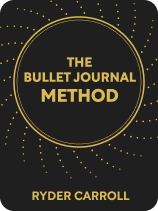

This article is an excerpt from the Shortform book guide to "The Bullet Journal Method" by Ryder Carroll. Shortform has the world's best summaries and analyses of books you should be reading.
Like this article? Sign up for a free trial here .
Do you feel like you lack clarity and direction in life? Why are you doing what you’re doing?
Many people run on autopilot which leads them to believe that life is meaningless. In his book The Bullet Journal Method, Ryder Carroll explains how to gain clarity on why you’re doing what you’re doing.
Here’s how you can use your Bullet Journal to gain clarity and purpose in life.
Gaining Clarity
To live our best lives, Carroll argues that we must make a deliberate effort to pause and reflect on the why behind our efforts. This is because when we run on autopilot and act without intention—which we so often do—our actions and experiences lose their context. (This is especially true for responsibilities that aren’t enjoyable, such as doing the dishes or paying bills.) And without context, our lives can start to feel meaningless.
(Shortform note: You may wonder why running on autopilot makes us lose sight of meaning. Mindfulness experts suggest that it relates to two systems in the brain that govern how we spend our time and energy. While the exploration and growth system focuses on meaning, possibility, and connection, the habitual survival system—the brain’s default system—encourages us to repeat familiar behaviors in the name of survival. Without deliberate effort to pursue what really matters to us, we default to what feels safe and comfortable, even if it isn’t meaningful).
The Bullet Journal Solution
In his book The Bullet Journaling Method, Carrols explains how to gain clarity and perspective using Bullet Journallig. There are a couple of ways you can use your journal to understand why you’re doing what you’re doing:
1) Focus on the Benefits of Difficult Tasks
The first strategy Carroll recommends is to create a customized section dedicated to finding clarity. Its purpose is to help you rediscover the reasons behind your efforts.
To do this, Carroll explains, scan your daily records for the most difficult tasks. When you find one, write how completing that task makes you feel on the left side of the spread (for example, “I hate meal planning for the week because it’s so frustrating to have to decide what I want to eat all the time”). Then, on the right side, write down how that task ultimately benefits you despite how you may feel about it (for example, “Planning ahead makes it easier to choose healthier options and prevents me from exceeding my grocery budget”).
If this is particularly difficult, Carroll suggests focusing instead on how completing that task benefits the people around you (for example, “Meal planning allows me to cook a little of something that everyone in the family likes, which makes them happy”). He acknowledges that although this exercise may not make these tasks any more enjoyable, it can make them easier to bear.
| Additional Ways of Reframing Tasks Carroll’s suggestion focuses on just one way you can alter the way you think about difficult tasks. However, there are additional ways you can reframe them so that they’re easier to manage. An alternative to focusing on the benefits of a task is to focus on choice. Instead of thinking about difficult tasks with the mindset of “I have to,” think “I choose to.” Although unpleasant responsibilities tend to feel like obligations, at the end of the day, it’s something you’ve chosen to do for one reason or another. (For example, you may hate mowing the lawn, but maybe you choose to do it anyway so that your child has a place to practice soccer.) Whatever the reason behind your action, bringing it to the forefront of your mind can give you a sense of autonomy that will help you see past the burden of the task. Another way to change your mindset surrounding difficult tasks is to think about why they’re important or how they fit into the bigger picture. For example, you may dread folding laundry, but forgoing that step will leave you with wrinkled clothes. While that may not seem like a big deal, it becomes significantly more problematic when you need to make a good first impression, such as in a job interview or on a first date. Keeping these details in mind when dealing with difficult tasks can provide enough justification to keep you motivated. |
2) Track Your Progress Through Transfers
The second strategy Carroll recommends is to track your progress through your journal transfers. Because it can be hard to see the significance in a given task initially, he says that observing your progress over time gives you the distance needed to see things from a different perspective. For example, although you may dread making student loan payments each month, looking back to see how much you’ve paid off can give you a sense of accomplishment and motivate you to keep going.
(Shortform note: There are a couple of different measures you can use to observe your progress as Carroll suggests. On the one hand, as demonstrated in the student loan payment example, you can consider your progress by looking at how far you’ve come. This strategy is especially useful when you’re only part of the way toward reaching your goal. On the other hand, you can take the opposite approach and look at how close you are to finally accomplishing your goal, which is ideal when you need a final push of motivation.)
Even with these two strategies, Carroll acknowledges that you may still struggle to find meaning in certain tasks. If that’s the case, it’s likely that those things aren’t adding value to your life, and you should either let them go or find an alternative task if necessary. For example, if you can’t see the purpose behind your daily morning run, consider cutting it out of your routine or finding an alternative activity that inspires you, such as yoga.
(Shortform note: Sometimes, letting go of a task, or even finding an alternative, isn’t an option; we simply have to do things we don’t want to do. For situations like this, it can be helpful to find other ways to manage your responsibilities. For example, you can learn to set a limit on your daily unpleasant tasks. Whether that’s only doing these tasks at a certain hour of the day or only scheduling a certain number of tasks, establish a boundary you can stick to. Similarly, make a habit of evaluating your current task load before taking on more. Using these strategies can make necessary tasks more bearable and help you avoid burnout.)

———End of Preview———
Like what you just read? Read the rest of the world's best book summary and analysis of Ryder Carroll's "The Bullet Journal Method" at Shortform .
Here's what you'll find in our full The Bullet Journal Method summary :
- A comprehensive guide to using the Bullet Journal Method
- How to maintain a journaling practice that can improve your overall quality of life
- How to extend the method beyond productivity to a practice in mindfulness






